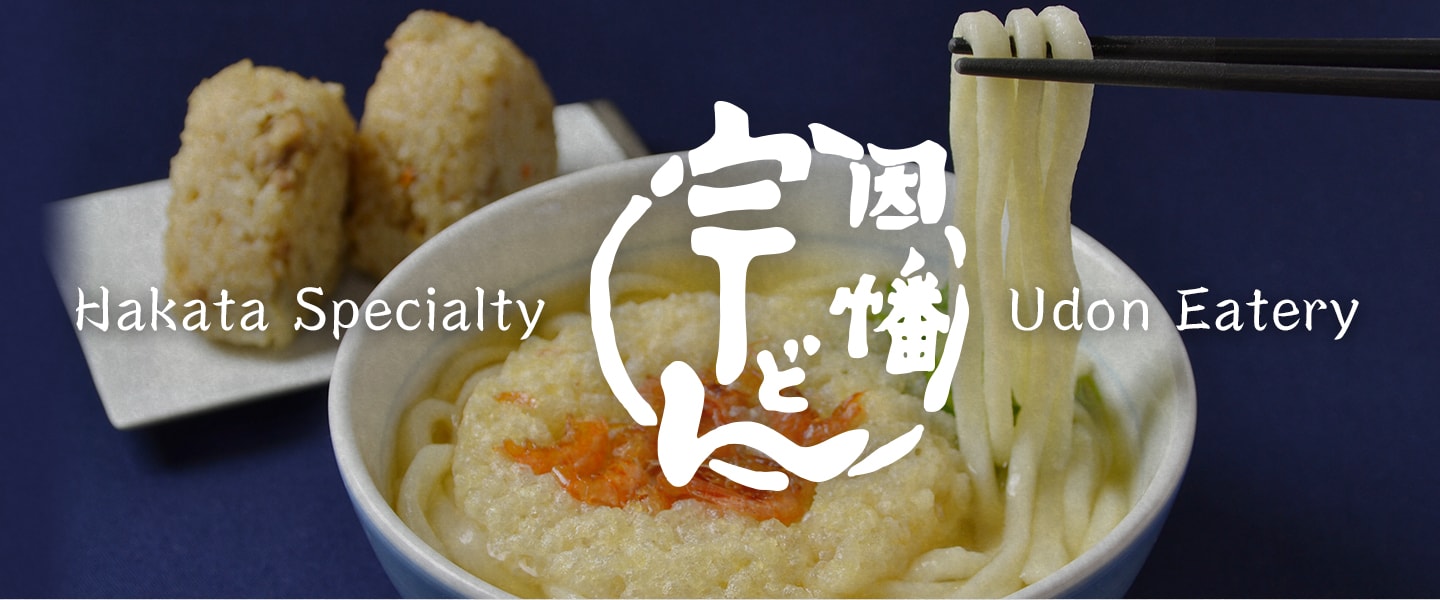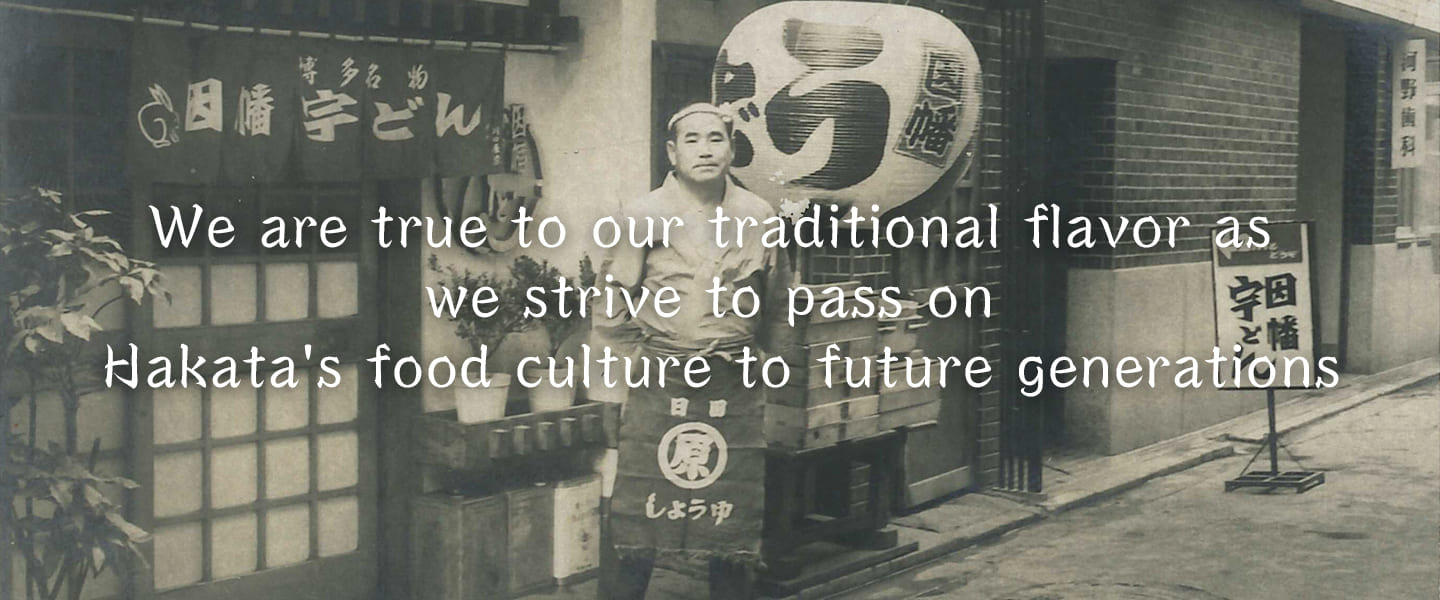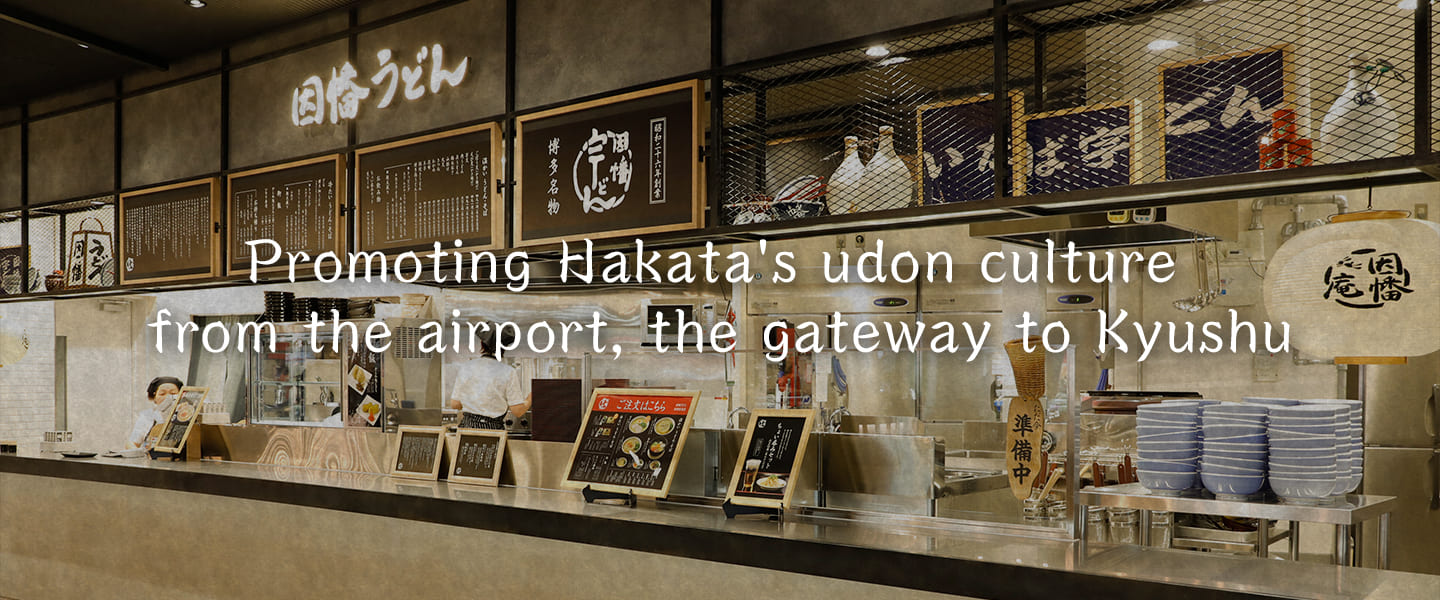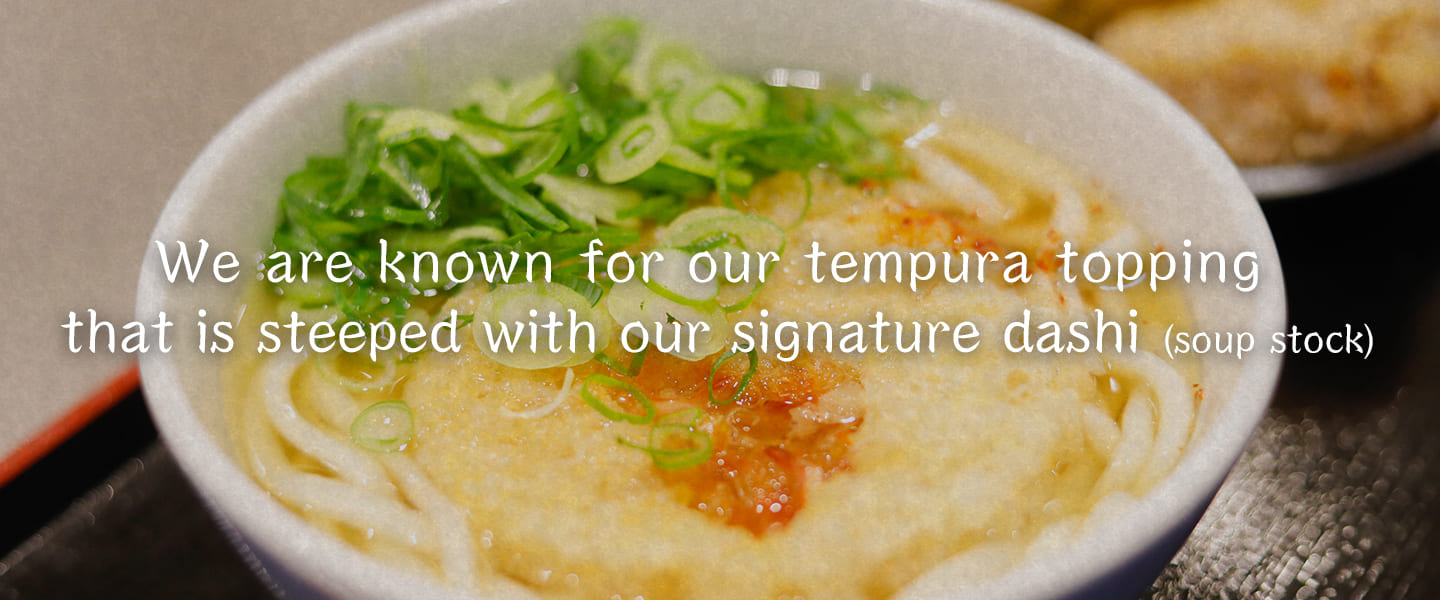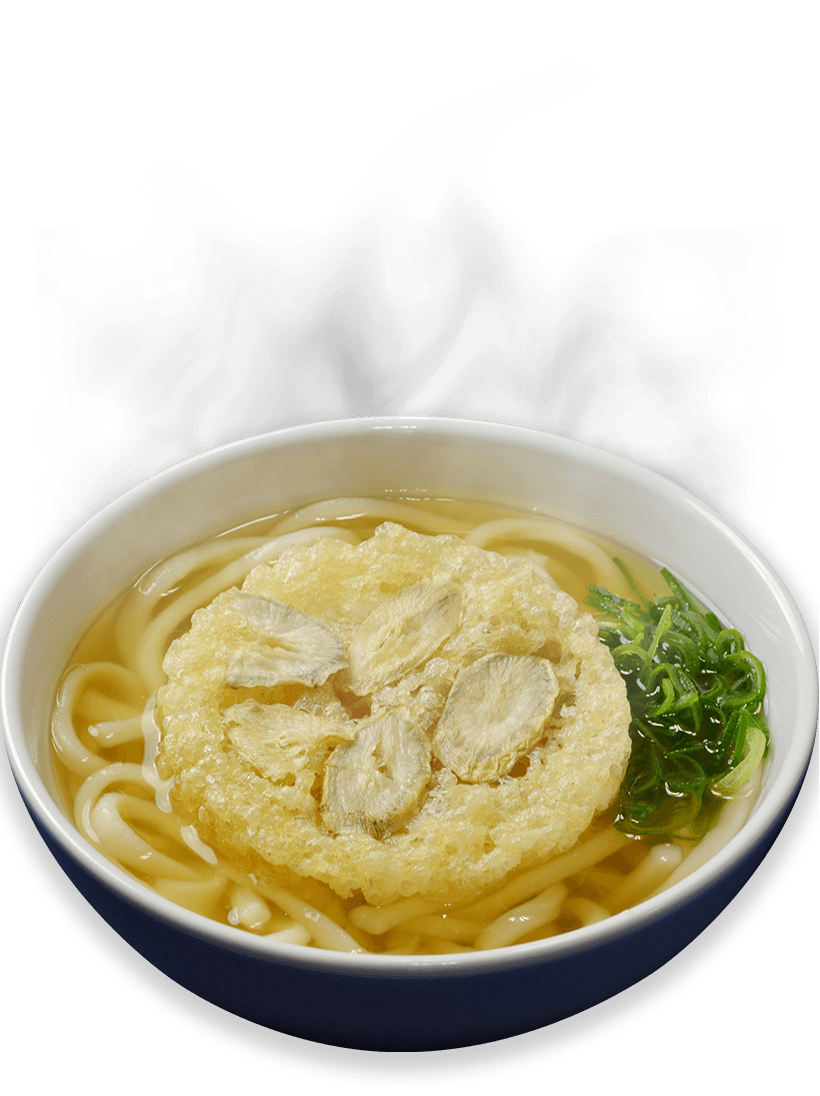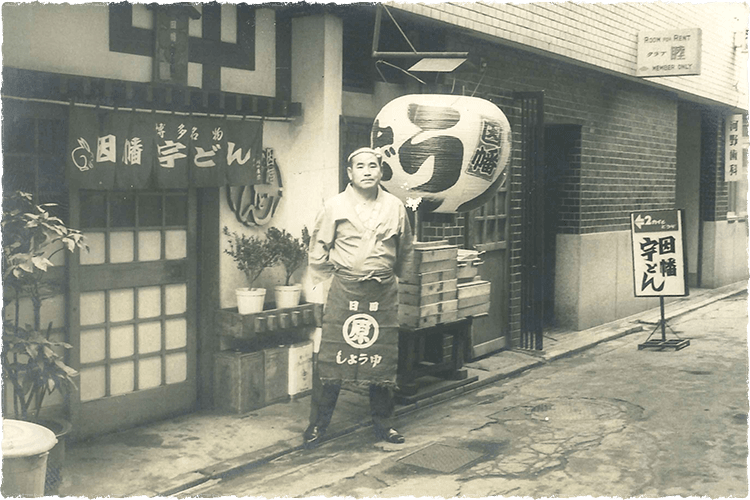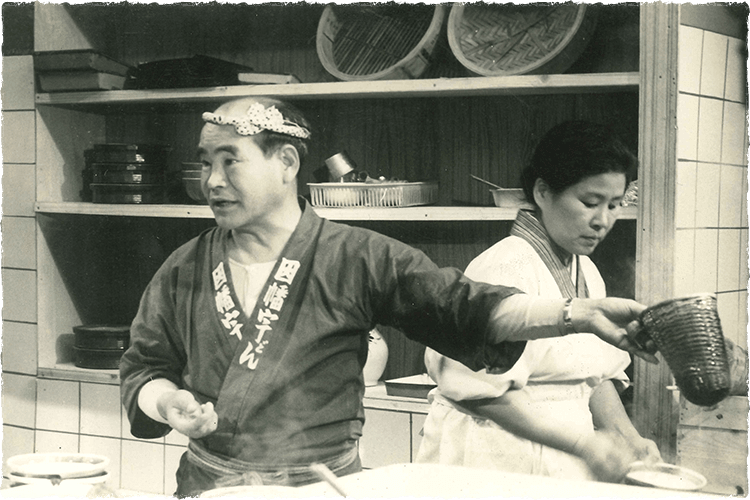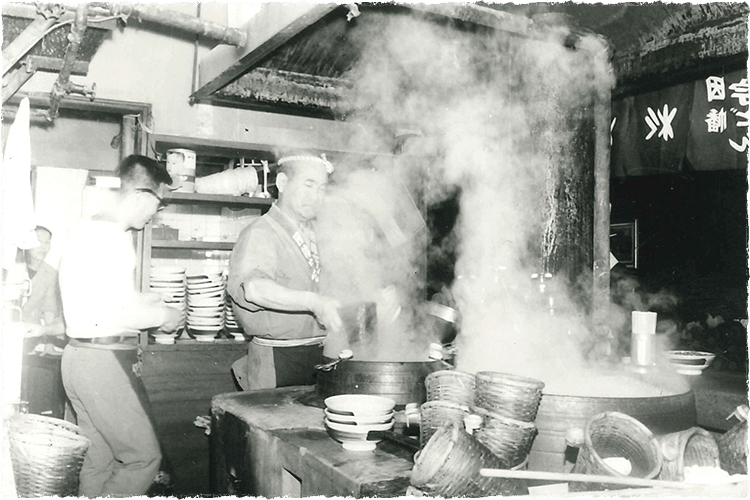Corporate History
-
September
1951The founder, Masao Sugi, started the business by opening the original branch of Inaba Udon at Tenjin 1-chome (formerly Inaba-cho).
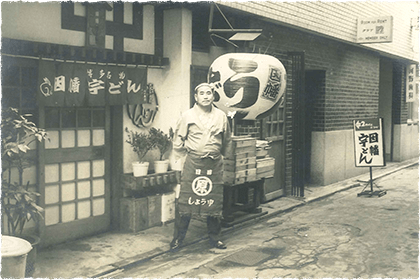
-
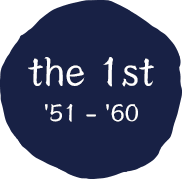
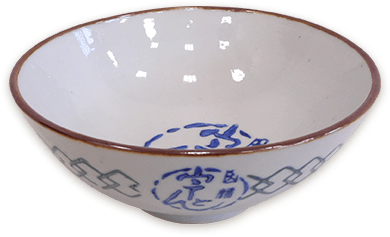
-
November
1961The Inaba Udon Meiten Arcade branch (present-day Solaria Stage branch) opened at the Nishitetsu Meiten Arcade.

-

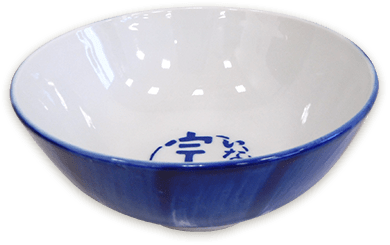
-

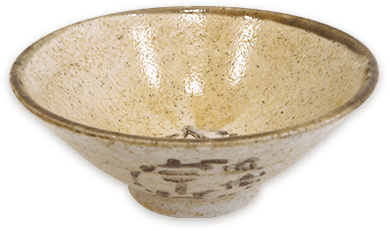
-
December
1963The Inaba Udon Hakata Station branch (present-day Restaurant New Inaba) opened at Hakata Ichibangai (Hakata First Avenue).
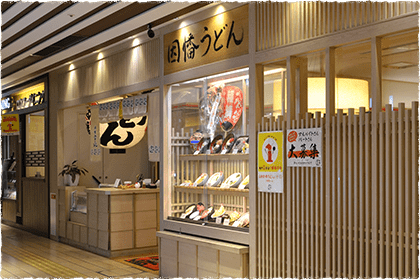
-
May
1974The Inaba Udon Watanabe-dori branch opened at Watanabe-dori 2-chome.
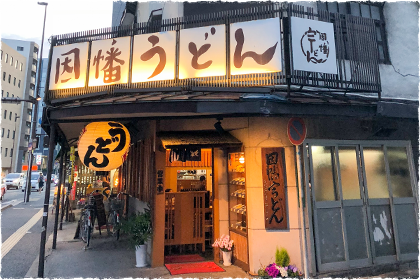
-
March
1975The Inaba Udon Hakata DEITOS branch opened at Hakata DEITOS.
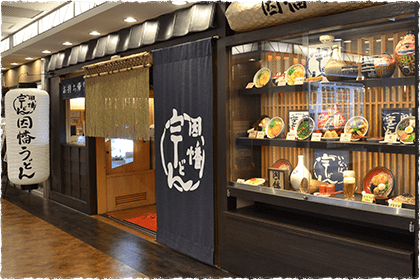
-

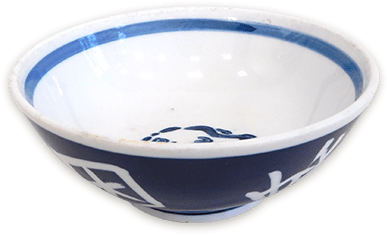
-


-
June
2016Inaba Udon is succeeded by Chikaranomoto Holdings
-
January
2017The Inaba Udon Fukuoka Airport branch opened in the domestic passenger terminal building of Fukuoka Airport.
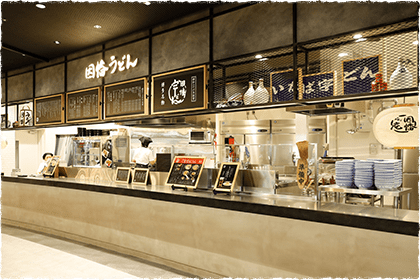
-
March
2018Restaurant New Inaba opened at Hakata Ichibangai (with a change of business category).

* Restaurant New Inaba reopened after it became popular in Nishitetsu Meitengai Aji-no-Town located underground of the former Tenjin Bus Center and was closed due to redevelopment while being missed.
-
The head office and factory were transferred to the newly established Inaba Kobo(atelier) in Hakata Ward, Fukuoka City.
The Inaba Udon Inaba Kobo branch also opened in the same location.



